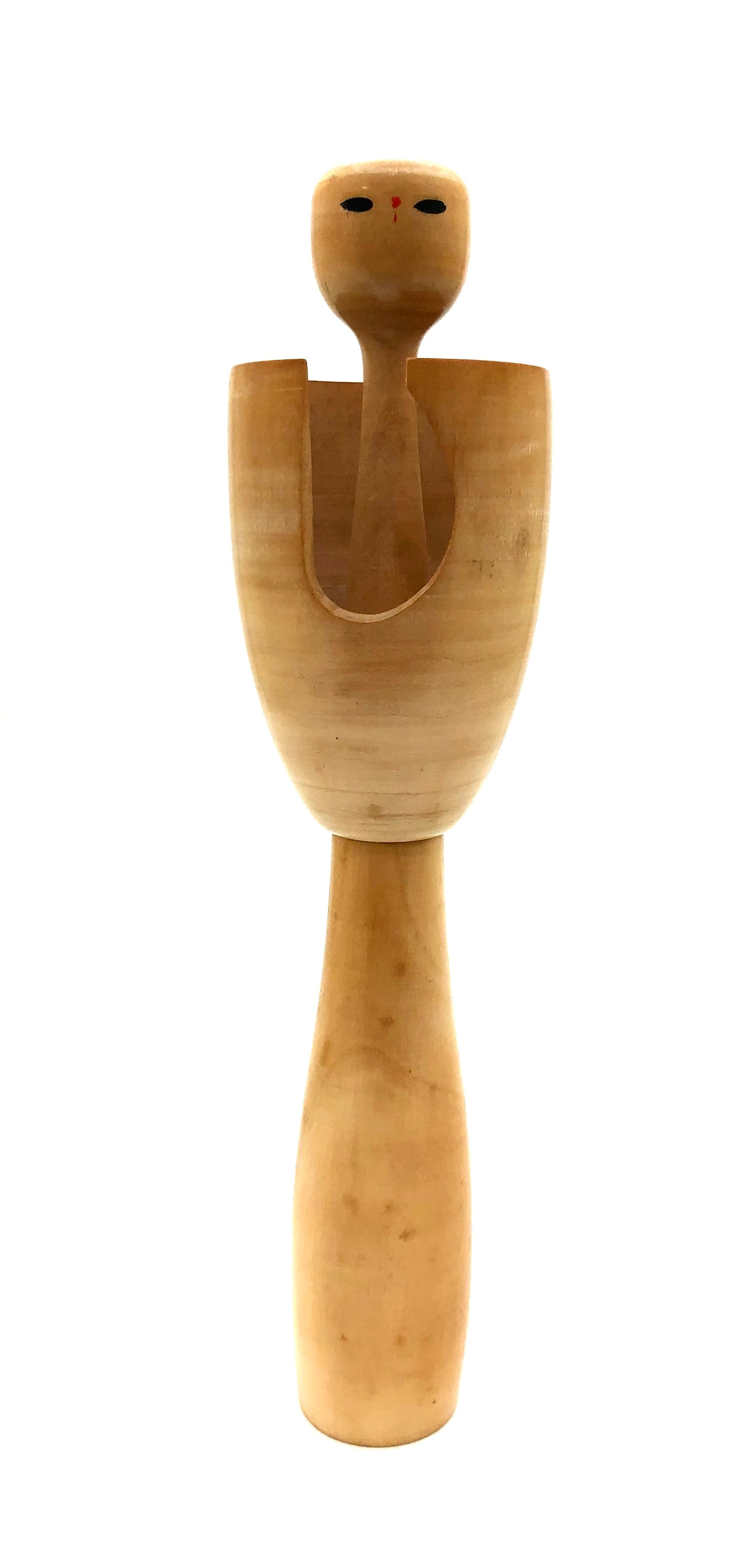
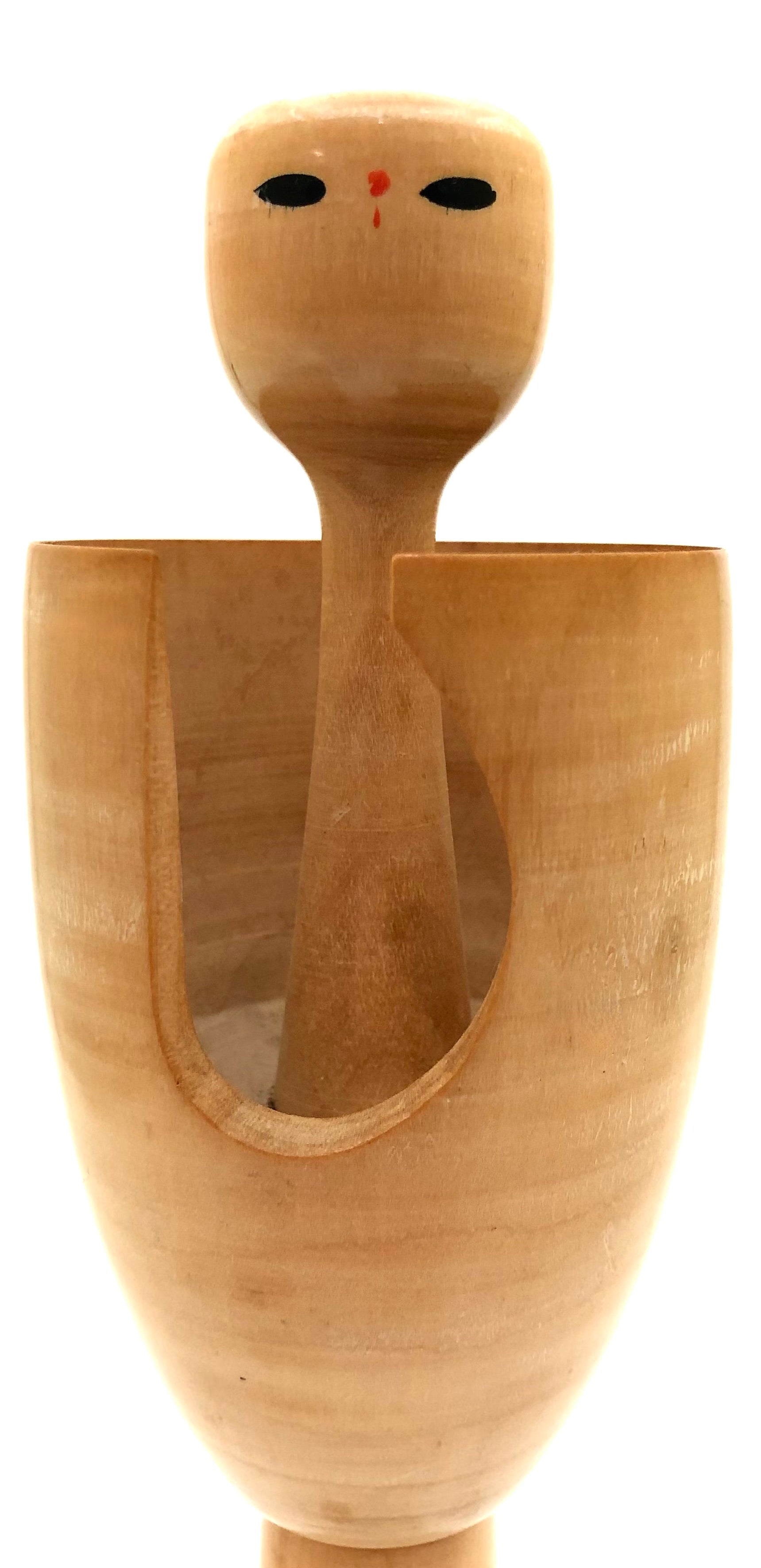
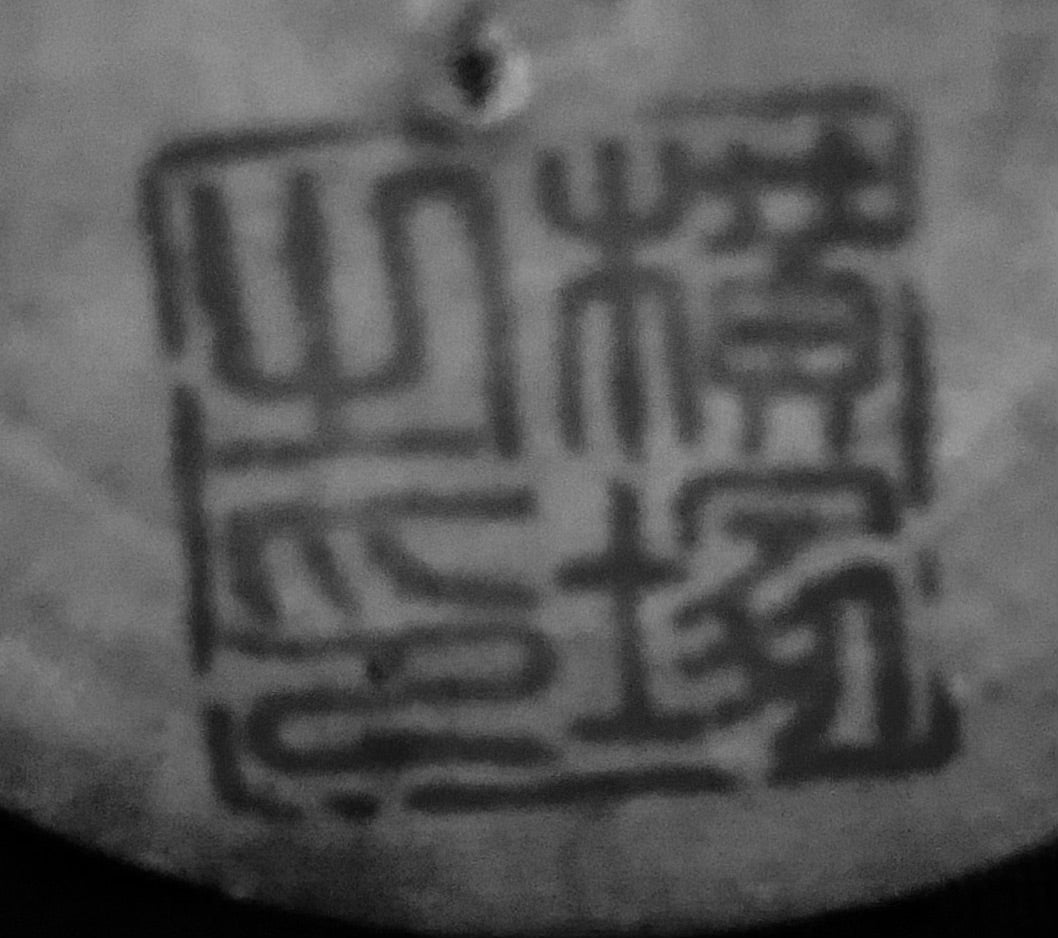
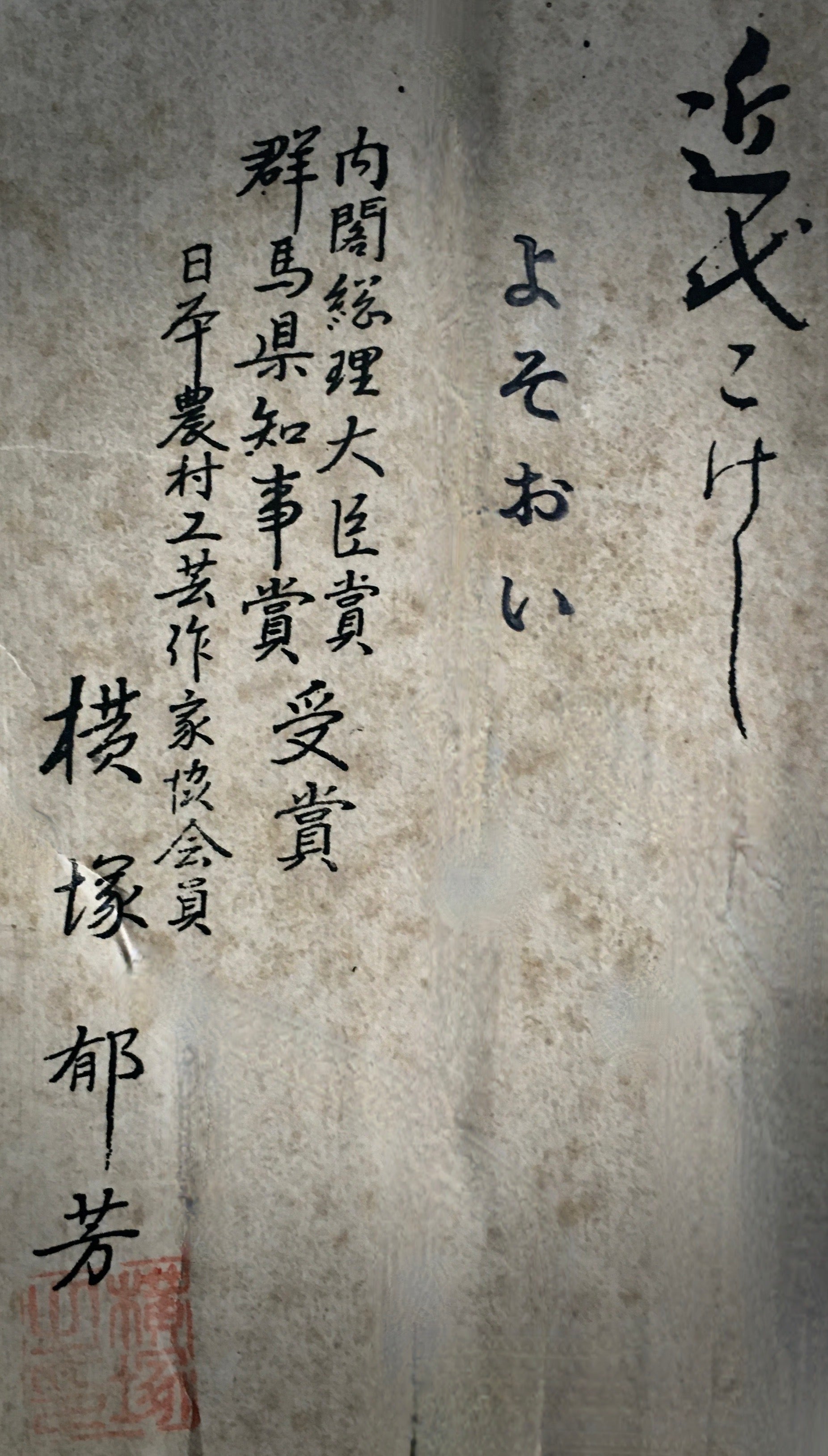
Rare Vintage Japanese Sosaku Kokeshi by Yokozuka, Ikuyoshi
Dimensions: 11-1/2”h
If outer space could be the theme, this Kokeshi is an award-winning doll entitled: “Shibo | Memory”. Lathe-turned, the jacket, (Haori), shows an extremely different approach to its design. The top is concave, to create a type of pocket from which the elongated neck and head emerge. The eyes look so out of this world, that such images inspire, and are a basis for anime. One can certainly understand why the study of history and artifacts is an important factor in enhancing creativity and innovation. With a taste for the dynamic, very clean, straight lines of the cupped shape of the garment serve as a blank canvas for textile design. It is important to remember, however, that most Japanese textiles are three-dimensional objects that move with the wearer. The simplicity of structure also belies the fact that donning a jacket that supports an often visually complex image, is sometimes void of decoration, and simply emphasizes form. This Kokeshi has an impressed seal on the bottom identifying the maker and matches what is on the box. Unfortunately, the original box for this doll was misplaced after an exhibition. Still, fortunately, we had a photograph of the information for your records and historical purposes which is shown in the written document in this image.
The doll was published in Sosaku Kokeshi: Celebrating the Major Artists of the Creative Movement, 2022 by Evans & Wolf.
Condition: Superb outstandingly, exceptional, impressive, and beautiful condition. No chips, cracks, breaks, missing pieces, or restoration, and retains its original details and finish. The piece meets all the standards of the collectible Sosaku Kokeshi.
For additional information on the artist/family go to: https://mingeiarts.com/collections/artisan-woodworker-yokozuka-ikuyoshi-1960
Yokozuka-san was born in Saitama-ken, Chibu-shi, and worked in Gunma-ken, Yonezawa-shi for most of his life. He won the Prime Minister’s Award for his unusual Sosaku creations. Unfortunately, Kokeshi making was not his emphasis, for he had more interest in “form giving”, and created only a few Kokeshi, which are rarely seen at public sales or auctions. No other information is available on this exceptional artist.
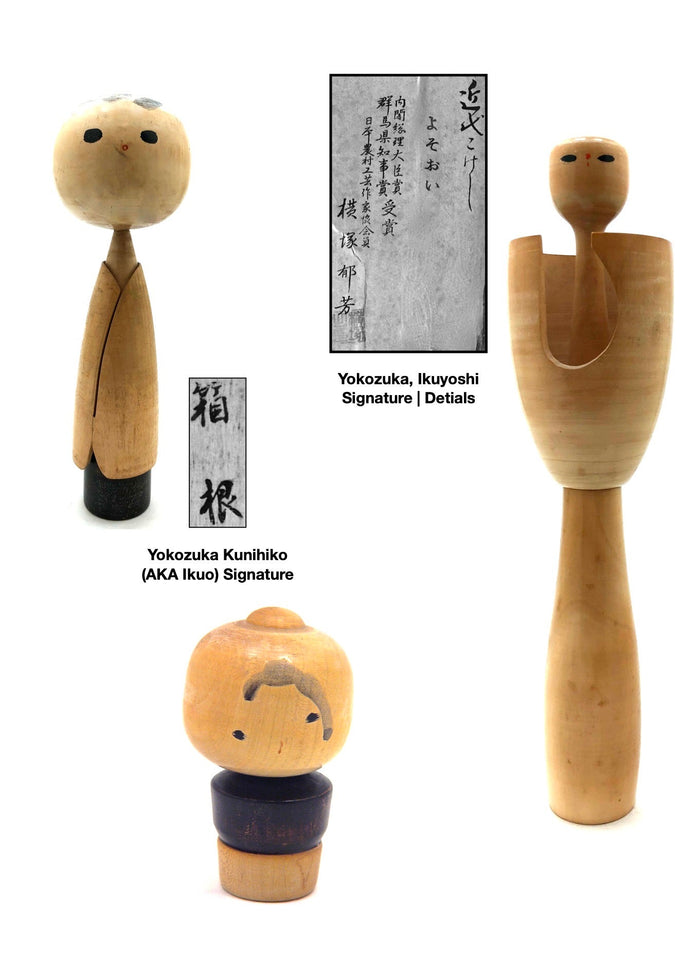
Artisan
Woodworker: Yokozuka, Ikuyoshi
Biographical History:
Yokozuka-san was born in Saitama-ken, Chihibu-shi, and worked in Gunma-ken, Yonezawa-shi for most of his life and his date of birth is unknown. He began recreating Kokeshi in 1964 and won the Prime Minister’s Award for his unusual Sosaku creations. Unfortunately, no other information is available on this exceptional artist. As collectors, we felt it was most important to represent all Sosaku Kokeshi artists, whether or not each artist has a written account of his/her life. We show the diversity of cultural values and the creative work produced by a multitude of artists. We credit the work shown on his artisan page to him but acknowledge these pieces were reproduced by a family member, Yokozuka, Kunihiko (AKA Ikuo) since his original dolls were recreated after he died in his memory. The tall doll on this page was awarded the Prime Minister Award for All Japan Kokeshi Contest in 1966.
In researching old writings through articles and books that remain, it is evident that the Kokeshi Craftsperson not only created beautiful forms as toys, but also kept alive cultural values, customs, and fashion through the extensive representations of Kokeshi dolls. The beauty is in the doll and not the signatures, for most masters never signed their dolls. Later they named the dolls, but only when Westerners insisted on signatures because they did not know the artists, so the carvers began to sign their works, for the carvers wanted to promote sales to make a living, during the seasons that did not provide an environment to continue their otherwise daily work.
Collector's note – descriptive qualities, standard characteristics & ornamentation styles:
This artist shows his fascination with innocence through his distinctive eyes. He uses the eyes to express feelings, which is a key factor in the identification of his work. It is unusual to see a lathe-turned-kokeshi whose coat, (Haori), is made as a separate and distinct element of the piece. One can certainly understand why the study of history and artifacts is an important factor in enhancing creativity and innovation. Yokozuka, (Ikuyoshi-san), produced very unique carved forms, some like science fiction figures, which were used as the basis for anime. He demonstrates a taste for dynamic, unified motifs; clean, straight, and curved lines of his garments give life to three-dimensional pieces. The simplicity of structure also belies the fact that donning a kimono, void of decoration, simply emphasizes form. Simple sumi-e’ is used to define faces and hair.
Explore & Learn More about Woodworker: Yokozuka, Ikuyoshi